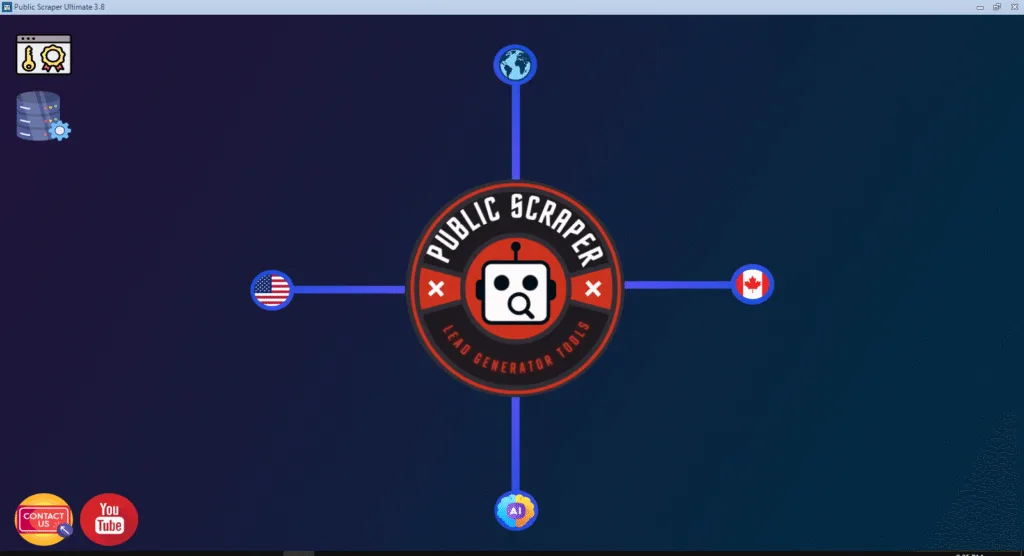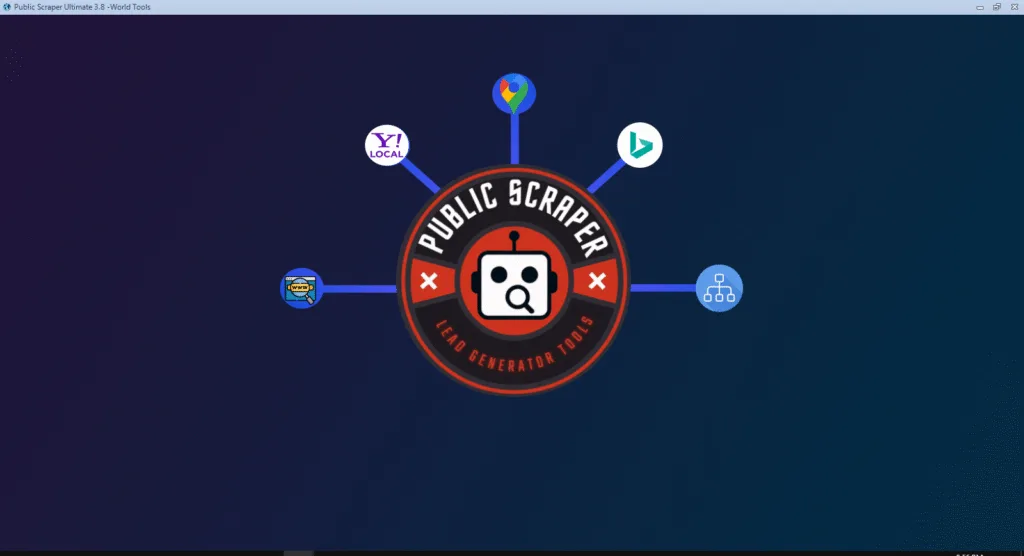Telegram is one of the most active messaging platforms for communities, support, and commerce. With the right workflows, you can responsibly automate repetitive tasks—joining groups you manage, organizing members, welcoming new users, and sending opt-in updates—while staying within Telegram’s rules and respecting user consent. This guide walks you through core building blocks of Telegram automation: connecting your app credentials, responsibly scraping group data you’re allowed to access, inviting users, and scheduling direct messages with sensible delays.
Important note: Always use automation ethically. Work only with groups you own or administer, or where you have explicit permission. Honor user preferences, local laws, and Telegram’s Terms of Service. Automation should enhance genuine engagement, not enable spam.
1) Create a Telegram app and connect your account
To use most Telegram automation libraries and tools, you need two credentials tied to your Telegram account:
- API ID (sometimes called
api_id) - API Hash (sometimes called
api_hash)

Here’s the straightforward setup:
- Sign in to Telegram on the web
Log in atmy.telegram.orgusing the same phone number you use in the Telegram mobile or desktop app. - Open “API development tools”
Choose “Create new application.” Give your app a recognizable title and short name. These are labels; you can change them later. - Copy your API ID and API Hash
After saving, Telegram shows your numeric API ID and your API Hash (a long alphanumeric string). Store both in a secure place. Treat the API Hash like a password—never publish it. - Add your phone number (with country code)
Your automation tool will ask for a login phone number like+1XXXXXXXXXXor+20XXXXXXXXXX. Use the same number you used on Telegram. On first connect, you’ll receive a login code inside Telegram; enter it to authorize the session. - Paste credentials into your automation tool
In your Telegram automation dashboard or configuration file, paste:- API ID
- API Hash
- Phone number with country code
- Best-practice security
- Enable Two-Step Verification in Telegram settings.
- Keep credentials in environment variables or a secrets manager when possible.
- Limit access to teammates who truly need it.
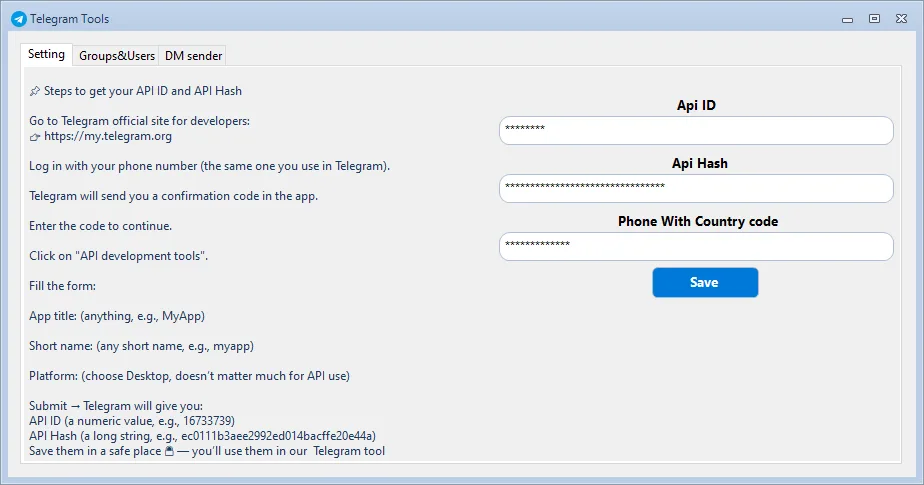
Once connected, your automation environment can establish a session and perform approved actions on your behalf.
2) Scrape group data responsibly (Extract Groups)
Many teams need a current view of the groups they manage, plus basic member lists for moderation, support, or onboarding workflows. A typical automation tool provides a safe, permission-aware way to discover and extract your groups:
- Link your account if you haven’t already.
- Click “Extract Groups.” The tool pulls the list of groups and supergroups your account can see or administer.
- Choose the group to process. Select a group you own or have permission to analyze.
- Start the extraction. Depending on settings, you may export basic, non-sensitive fields (e.g., username, display name, user ID, role). Some tools also capture last-seen or bio if visible, but you should only store what’s necessary and compliant.
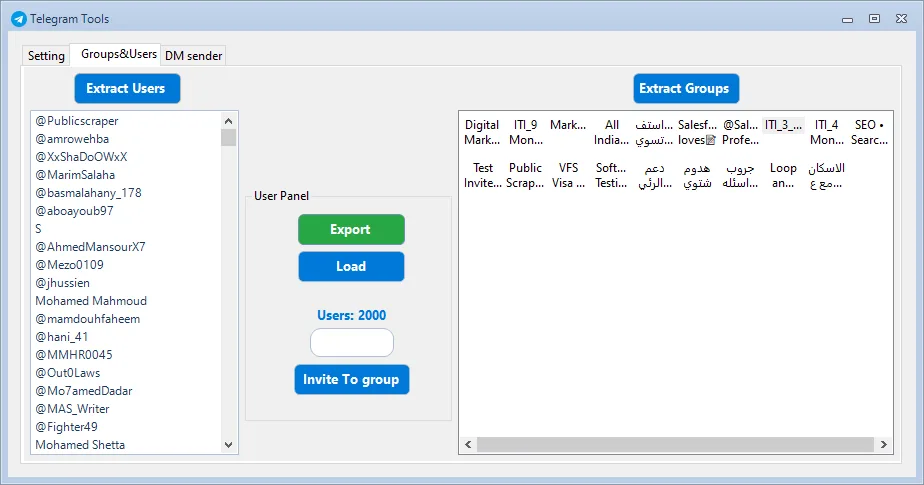
Why “responsibly”? Because bulk exporting member data—especially from public groups—can be sensitive. Always comply with the group’s rules, Telegram’s policies, and applicable privacy regulations. If you’re working with customer communities, it’s smart to include consent language in your group description or welcome message outlining how you handle data.
3) Invite users to a group (with built-in timeout handling)
Automation can help admins grow communities they oversee—especially when migrating users from one group to another or onboarding members from an opt-in list.
Typical workflow:
- Select the destination group. This must be a group you administer.
- Choose the user source. Often it’s a vetted list of users who opted in, or members of a related group you also manage.
- Set how many users to process. Enter a target count for this run. Break big jobs into smaller batches for safety and transparency.
- Start invites. The tool sends invites one by one, respecting Telegram’s rate limits. If Telegram returns a timeout or flood-wait error, a well-designed bot will pause automatically for the required interval and then continue—no manual babysitting required.

Good practices for inviting:
- Invite only users who gave explicit permission or who clearly expect to join the new group (for example, when consolidating two official communities).
- Avoid large, sudden spikes. Steady, predictable invites are safer and more user-friendly.
- Keep logs. If a user later asks, you can show when and why they were invited.
- Watch for declines or blocks and honor them immediately.
4) Telegram Automation Sender: direct messages with smart delays
There are legitimate reasons to message users directly: onboarding, support follow-ups, or confirming an opt-in alert. The Automation Sender feature makes this manageable while avoiding spam triggers and respecting people’s time.
How to use it well:
- Build your audience. Only include users who are expecting your message—customers, applicants, beta testers, or members who opted into DMs.
- Write a rotating set of messages. Provide a list of message variants. The sender can randomly rotate through them to keep outreach natural and reduce repetition.
- Personalize lightly. Include available, non-sensitive tokens like first name or their plan type. Simple personalization improves response rates without feeling intrusive.
- Set delay ranges. Define a minimum and maximum delay between messages. Many tools, including Telegram automation toolsets, suggest a best timer based on your audience size—for example, a slightly longer delay for very large sends. This helps you stay within rate limits and maintain a human cadence.
- Respect replies and opt-outs. If someone asks to stop, stop. If they have a question, answer meaningfully rather than pushing another template.
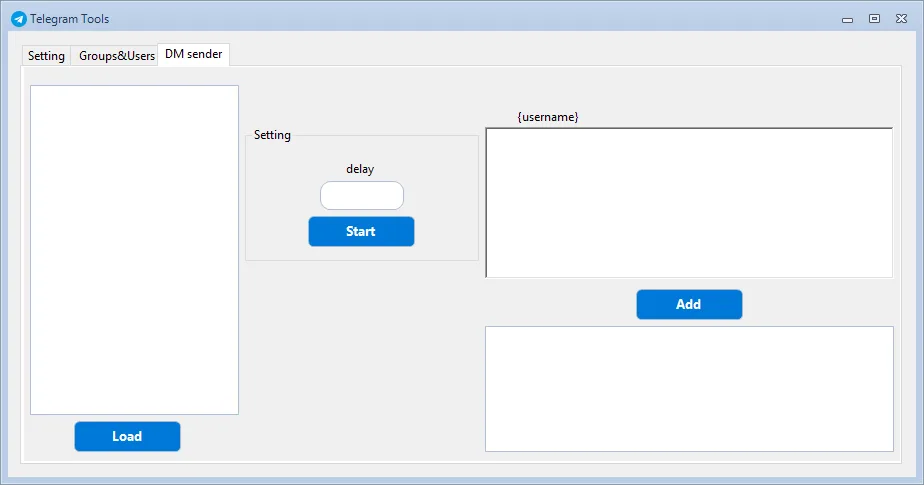
Compliance checklist for direct messages:
- Obtain consent where required.
- Keep language helpful and to the point.
- Provide a clear way to opt out.
- Log sends and outcomes for accountability.
- Review metrics to improve relevance, not just volume.
Troubleshooting common issues
- Login or session errors: Re-check the phone number format with country code, confirm the latest login code, and verify Two-Step Verification if enabled.
- Invalid API Hash or ID: Ensure you copied from
my.telegram.orgwithout extra spaces. Regenerate if you suspect compromise. - Flood-wait / timeout messages: This is normal under heavier activity. A good automation tool automatically pauses and resumes. If it happens frequently, reduce batch sizes and extend delays.
- Invite blocked or user privacy settings: Some users disallow messages or invites from non-contacts. Your tool should skip these gracefully and continue.
- Group permissions: Make sure your account is an admin in the destination group if you’re inviting members, and that your role allows adding users.
Ethical and strategic guidelines for long-term success
- Lead with value. Automate only what supports a better member experience.
- Start small. Test with small batches, review results, and scale gradually.
- Document your policy. State how you collect, store, and use data.
- Keep content relevant. Even opt-in audiences tire of off-topic or overly frequent messages.
- Measure quality. Track responses, opt-outs, and user satisfaction—not just message counts.
Final word: Pair Telegram automation with rich data from Public Scraper Ultimate
Automation is strongest when it’s informed by high-quality, permission-based data. Public Scraper Ultimate brings together 12+ data tools to support ethical outreach and research, including Google Maps, Bing Maps, Yahoo Local, Yellow Pages, Manta, Super Pages, and AI Niche Targeting. You can discover local businesses, verify contact details, and identify the most relevant categories for your product—then use Telegram automation to welcome new members, send onboarding tips, or share important service updates. The platform keeps growing, adding more sources and utilities so you can maintain accurate data pipelines. Used together, you get a durable, compliant workflow: find the right audience, confirm consent, deliver meaningful messages at the right cadence, and build communities that last.
